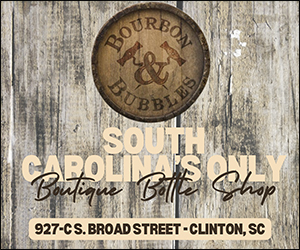February Yard and Garden Tips
January 30, 2024by Clemson Extension Laurens Office
February is here and there is plenty to keep you busy in your yard and garden.
Things to do:
Flowers
• Bulbs – it’s time to buy your fall-flowering bulbs, such as dahlias, gladioli, cannas, and lilies. Don’t plant them yet – wait for warmer weather (the soil temperature must be at least 55 degrees F). See Summer- and Fall-Flowering Bulbs for more information.
Fruits
• Tree Fruits – spray your tree fruits this month with a dormant oil (such as volck oil) to control mites and scale. The oil simply covers the tree and suffocates the insects, and it also helps inhibit sporulation of some diseases. (Note – do not apply dormant oil when the tree is not dormant. Doing so in the spring, summer, and fall will cause damage – the tree cannot transpire properly when covered with the oil during the wrong season.)
Lawns
• Fertilizer – it’s time for the first application of fertilizer for fescue and other cool-season grass lawns. Follow the recommendations on your soil test report for your lawn. DON’T fertilize warm-season grass lawns early in the winter! See Fertilizing Lawns for more information. If you have not soil-tested your lawn areas in the past 12 months, now is a great time!
• Henbit – this nice little lawn weed can be a problem. Treat now to prevent its return this summer. See Henbit for more information.
• Lawn Burweed – if you had low-growing plants in your yard with sticky burs on them last year, February is the last month to spray to control them for next summer. See Lawn Burweed for more information.
• Trampweed – if you saw this fluffy-looking weed last summer and fall, now is the time to treat your yard to prevent its return. This should be your second treatment if you have a warm-season lawn; it should be your first if you have a cool-season lawn (such as fescue). See Annual Trampweed for more information.
• Irrigation – believe it or not, if you have a warm-season lawn you *might* need a little water this month. If there is an extended dry period during the winter (4+ weeks), adding one inch of water (on a warm day, of course) will help the soil retain heat and may help prevent injury to cold-sensitive grasses. See Winter Irrigation and Winterizing for more information.
Trees
• Pruning – now is a great time to prune most trees and shrubs. However, do not prune azalea, dogwood, forsythia, redbud and rhododendron – they should be pruned after they bloom, since they set blooms in the fall. Almost anything that blooms after June 1 (except oakleaf hydrangea and late-flowering azalea cultivars) can be pruned safely now. See Pruning Trees and Pruning Shrubs for more information.
• Tree Planting – the winter months when trees are dormant are excellent times to plant. Be careful that you do not plant them too deep or with too much soil amendment. See Planting Trees Correctly for information on the proper way to plant a tree.
Vegetables
• Vegetables – Some planting times for more common vegetables (See Planning a Garden for a full list and planting depths and spacings):
o Asparagus crowns – early February – late March
o Cabbage – Feb. 15 – Apr. 1
o Garden Peas – Feb. 1 – 15
o Turnips – Feb. 20 – Apr. 1
All pamphlets referenced in this calendar may be found online: http://www.clemson.edu/hgic or http://www.clemson.edu/cafls/departments/esps/factsheets/.
The Clemson University Cooperative Extension Service offers its programs to people of all ages, regardless of race, color, gender, religion, national origin, disability, political beliefs, sexual orientation, gender identity, marital or family status and is an equal opportunity employer.














